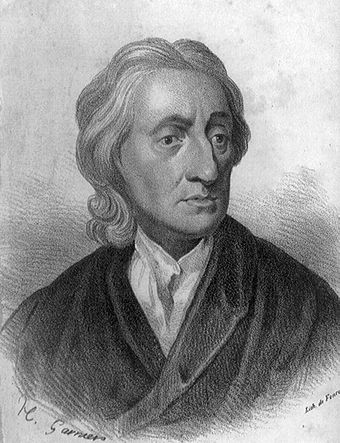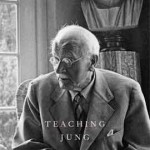 The most important findings of scientific dream research can be summarized in nine key points. Many important questions about dreaming remain unanswered, but these nine findings have solid empirical evidence to support them.
The most important findings of scientific dream research can be summarized in nine key points. Many important questions about dreaming remain unanswered, but these nine findings have solid empirical evidence to support them.
- Rapid eye movement (REM) sleep is a trigger for dreaming, but is not identical with dreaming. All mammals have sleep cycles in which their brains pass through various stages of REM and non-REM sleep. Dreaming seems to occur most often, and most intensely, in REM sleep, a time when many of the brain’s neuro-electrical systems have risen to peak levels of activation, as high as levels found in waking consciousness. However, dreaming occurs outside of REM sleep, too, so the two are not identical; REM sleep is neither necessary nor sufficient for dreaming.
- REM helps the brain grow. The fact that REM sleep ratios are at their highest early in childhood (newborns spend up to 80% of their sleep in REM, whereas adults usually have 20-25% of their sleep in REM) suggests that REM, and perhaps dreaming, have a role in neural maturation and psychological development.
- Dreaming also occurs during hypnogogic, hypnopompic, and non-REM stage 2 phases of sleep. In the transitional times when a person is falling asleep (hypnogogic) or waking up (hypnopompic), various kinds of dream experiences can occur. The same is true during the end of a normal night’s sleep cycle, when a person’s brain is alternating exclusively between REM and non-REM stage 2 phases of sleep, with a relatively high degree of brain activation throughout. Dreams from REM and non-REM stage 2 are difficult to distinguish at these times.
- The neuro-anatomical profile of REM sleep supports the experience of intense visionary imagery in dreaming. During REM sleep, when most but not all dreaming occurs, the human brain shifts into a different mode of regional activation. Areas of the prefrontal cortex involved in focused attention and rational thought become less active, while areas in the limbic system (involved in emotional processing, memory, and instinctive responses) and the occipital lobe (involved in visual imagination) become much more active. This suggests that the human brain is not only capable of generating intense visionary experiences in dreaming, it has been primed to do so on a regular basis.
- The recurrent patterns of dream content are often continuous with people’s concerns, activities, and beliefs in waking life. This is known as the “continuity” hypothesis, and it highlights the deep consistency of waking and dreaming modes of thought. People’s dreams tend to reflect the people and things they most care about in the waking world. A great deal of dream content involves familiar people, places, and activities in the individual’s waking life. The dreaming imagination is fully capable of portraying normal, realistic scenarios. This means dreaming is clearly not a process characterized by total incoherence, irrationality, or bizarreness.
- The discontinuities of dreaming, when things happen that do not correspond to a normal waking life concern, can signal the emergence of metaphorical insights. Research on the improbable, unreal, and extraordinary elements of dream content has shown that, on closer analysis, this material often has a figurative or metaphorical relationship to the dreamer’s waking life. Metaphorical themes and images in dreams have a long history in the realm of art and creativity, and current scientific research highlights the dynamic, unpredictable nature of dreaming as an endless generator of conceptual novelty and innovation.
- Dream recall is variable. Most people remember one to two dreams per week, although the memories often fade quickly if the dreams are not recorded in a journal. On average, younger people tend to remember more dreams than older people, and women more than men. Even people who rarely remember their dreams can often recall one or two unusual dreams from their lives, dreams with so much intensity and vividness they cannot be forgotten. Dream recall tends to respond to waking interest. The more people pay attention to their dreams, the more dreams they are likely to remember.
- Dreaming helps the mind to process information from waking life, especially experiences with a strong emotional charge. From a cognitive psychological perspective, dreaming functions to help the mind adapt to the external environment by evaluating perceptions, regulating emotional arousal, and rehearsing behavioral responses. Dreaming is like a psychological thermostat, pre-set to keep us healthy, balanced, and ready to react to both threats and opportunities in the waking world. Post-traumatic nightmares show what happens when an experience is too intense and painful to process in a normal way, knocking the whole system out of balance.
- The mind is capable of metacognition in dreaming, including lucid self-awareness. During sleep and dreaming the mind engages in many of the activities most associated with waking consciousness: reasoning, comparing, remembering, deciding, and monitoring one’s own thoughts and feelings. Lucid dreaming is one clear example of this, and so are dreams of watching oneself from an outside perspective. These kinds of metacognitive (thinking about thinking) functions were once thought to be impossible in dreaming, but current research has proven otherwise. Dreaming has available the full range of the mind’s metacognitive powers, although in different combinations from those typically active in ordinary waking consciousness.

For further reading:
Barrett, Deirdre and Patrick McNamara, ed.s. The New Science of Dreaming. Westport: ABC-Clio, 2007.
Bulkeley, Kelly. Big Dreams: The Science of Dreaming and the Origins of Religion. New York: Oxford University Press, 2016.
Domhoff, G. William. Finding Meaning in Dreams: A Quantitative Approach. New York: Plenum, 1996.
Hurd, Ryan and Kelly Bulkeley, ed.s. Lucid Dreaming: New Perspectives on Consciousness in Sleep. Westport: ABC-Clio, 2014.
Kryger, Meir H., Thomas Roth, and William C. Dement, ed.s. Principles and Practice of Sleep Medicine. Fourth Edition. Philadelphia: Elsevier Saunders, 2005.
Maquet, Pierre, Carlyle Smith, and Robert Stickgold, ed.s. Sleep and Brain Plasticity. New York: Oxford University Press, 2003.
Pace-Schott, Edward, Mark Solms, Mark Blagrove, and Stevan Harnad, ed.s. Sleep and Dreaming: Scientific Advances and Reconsiderations. Cambridge University Press, 2003.
Pagel, James. The Limits of Dream: A Scientific Exploration of the Mind/Brain Interface. New York: Academic Press, 2010.
Solms, Mark. The Neuropsychology of Dreams: A Clinico-Anatomical Study. Mahway: Lawrence Erlbaum, 1997.

 All life on earth is fundamentally oriented toward the cyclical presence and absence of the sun. Every kind of living being has evolved internal clocks of approximately 24 hours in length that guide and regulate their biological processes and behaviors. These internal clocks are known as circadian rhythms, and they have long been observed as powerful factors in plant and animal life. But only recently have the details of how these clocks work become known, thanks to the work of this year’s trio of prize winners. Their studies, going back to the 1980’s, explain how circadian rhythms are programmed into the genetic activities of each cell at the molecular level.
All life on earth is fundamentally oriented toward the cyclical presence and absence of the sun. Every kind of living being has evolved internal clocks of approximately 24 hours in length that guide and regulate their biological processes and behaviors. These internal clocks are known as circadian rhythms, and they have long been observed as powerful factors in plant and animal life. But only recently have the details of how these clocks work become known, thanks to the work of this year’s trio of prize winners. Their studies, going back to the 1980’s, explain how circadian rhythms are programmed into the genetic activities of each cell at the molecular level. It may also give us new insights into the rhythms, cycles, and recurrent patterns in human dreaming. Anything that gives a new understanding of sleep has the potential to provide a new understanding of dreams, since dreaming naturally emerges out of the state of sleep. The ubiquity of dreaming in human experience throughout recorded history, in cultures all over the world, strongly suggests it is a phenomenon deeply rooted in our evolutionary heritage. It strengthens the argument in favor of this idea to show, as this year’s Nobel winners have done, that the circadian rhythms guiding our waking and sleeping behaviors are encoded in every cell in our bodies. There can no longer be any question that sleep is an absolutely vital feature of healthy human life. The study of dreams can build on this solid foundation in evolutionary biology to explore in more detail what exactly is happening in the mind and body during sleep that contributes so powerfully to human health.
It may also give us new insights into the rhythms, cycles, and recurrent patterns in human dreaming. Anything that gives a new understanding of sleep has the potential to provide a new understanding of dreams, since dreaming naturally emerges out of the state of sleep. The ubiquity of dreaming in human experience throughout recorded history, in cultures all over the world, strongly suggests it is a phenomenon deeply rooted in our evolutionary heritage. It strengthens the argument in favor of this idea to show, as this year’s Nobel winners have done, that the circadian rhythms guiding our waking and sleeping behaviors are encoded in every cell in our bodies. There can no longer be any question that sleep is an absolutely vital feature of healthy human life. The study of dreams can build on this solid foundation in evolutionary biology to explore in more detail what exactly is happening in the mind and body during sleep that contributes so powerfully to human health. The English philosopher John Locke (1632-1704) played a vital role in promoting the ideals of the Enlightenment throughout Europe in the seventeenth and eighteenth centuries. These ideals included a trust in human reason, a corresponding distrust in authority and received opinion, and a demand that people who make theoretical claims about nature, society, the mind, etc., must offer empirical evidence to back up their assertions.
The English philosopher John Locke (1632-1704) played a vital role in promoting the ideals of the Enlightenment throughout Europe in the seventeenth and eighteenth centuries. These ideals included a trust in human reason, a corresponding distrust in authority and received opinion, and a demand that people who make theoretical claims about nature, society, the mind, etc., must offer empirical evidence to back up their assertions. For anyone interested in learning more about dreaming, I have a simple piece of advice: keep a dream journal. Record your dreams on a regular basis, track their themes and patterns over time, and you will discover through your own experience many of the key psychological principles that shape the general process of dreaming.
For anyone interested in learning more about dreaming, I have a simple piece of advice: keep a dream journal. Record your dreams on a regular basis, track their themes and patterns over time, and you will discover through your own experience many of the key psychological principles that shape the general process of dreaming.  Have you ever had a dream of flying, or being chased, or having an intense sexual experience, or seeing someone who is dead appear as if they were alive again? Write those out, too. Do you remember any recurrent dreams? That’s very important to note, because recurrent dreams provide one of the best points of entry for a study of the long-term themes and patterns in your dreaming.
Have you ever had a dream of flying, or being chased, or having an intense sexual experience, or seeing someone who is dead appear as if they were alive again? Write those out, too. Do you remember any recurrent dreams? That’s very important to note, because recurrent dreams provide one of the best points of entry for a study of the long-term themes and patterns in your dreaming. It is worthwhile to include information about one’s sleep patterns in the journal, since the conditions of sleep often make a significant impact on the dreaming process. Ideally, each entry has the date, the location where you are sleeping, the time you go to sleep, the time you wake up, and a subjective assessment of the quality of your sleep (e.g., good, fair, poor). If you do not remember any dreams for that night, at least you have gathered some useful information about your sleep.
It is worthwhile to include information about one’s sleep patterns in the journal, since the conditions of sleep often make a significant impact on the dreaming process. Ideally, each entry has the date, the location where you are sleeping, the time you go to sleep, the time you wake up, and a subjective assessment of the quality of your sleep (e.g., good, fair, poor). If you do not remember any dreams for that night, at least you have gathered some useful information about your sleep. Along with the dream report, a journal will typically include thoughts, memories, and associations that come to mind in relation to the dream. These comments can be brief or very extensive, depending on your time and inclination.
Along with the dream report, a journal will typically include thoughts, memories, and associations that come to mind in relation to the dream. These comments can be brief or very extensive, depending on your time and inclination. Carl Jung, one of the pioneers of Western dream psychology, proposed back in the 1930’s that a series of dreams can provide an extremely useful means of exploring an individual’s life. In his essay titled “Individual Dream Symbolism in Relation to Alchemy,” he presented his analysis of “over a thousand dreams and visual impressions coming from a young man of excellent scientific education.” (116) Jung described his method in these terms:
Carl Jung, one of the pioneers of Western dream psychology, proposed back in the 1930’s that a series of dreams can provide an extremely useful means of exploring an individual’s life. In his essay titled “Individual Dream Symbolism in Relation to Alchemy,” he presented his analysis of “over a thousand dreams and visual impressions coming from a young man of excellent scientific education.” (116) Jung described his method in these terms: The latest series to be uploaded into the Sleep and Dream Database (
The latest series to be uploaded into the Sleep and Dream Database ( The scientific study of dreams has fallen on hard times. In an era dominated by cognitive-behavioral therapy, psychoactive drugs, and computer models of the mind, dreaming seems less relevant to psychology today than at any time since Sigmund Freud published The Interpretation of Dreams in 1900.
The scientific study of dreams has fallen on hard times. In an era dominated by cognitive-behavioral therapy, psychoactive drugs, and computer models of the mind, dreaming seems less relevant to psychology today than at any time since Sigmund Freud published The Interpretation of Dreams in 1900.